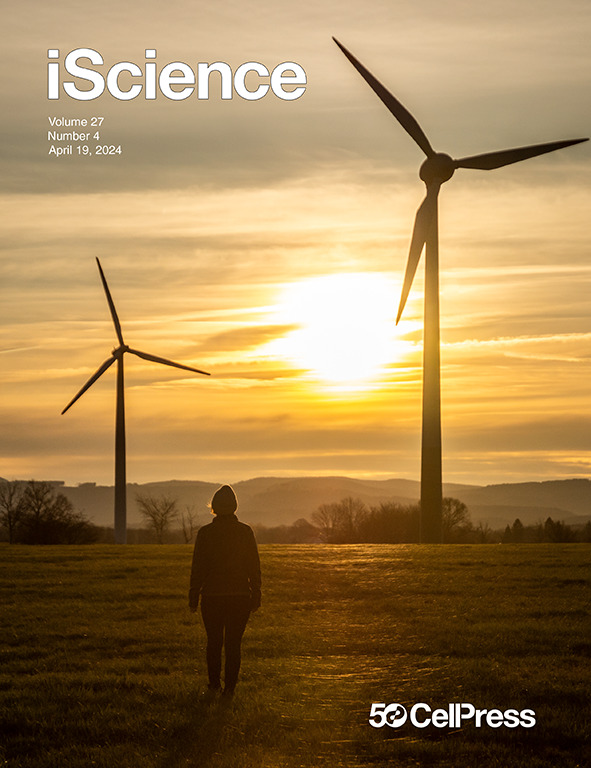人源化小鼠模型揭示T细胞ANXA2是缺血性脑卒中的潜在治疗靶点
IF 4.6
2区 综合性期刊
Q1 MULTIDISCIPLINARY SCIENCES
引用次数: 0
摘要
在啮齿类动物中的中风T细胞研究尚未转化为人类研究。中风后细胞和分子T细胞变化的机制尚不完全清楚。因此,本研究建立了大脑中动脉闭塞(MCAO)后人源化小鼠模型,并确定了人源化T细胞群的潜在治疗靶点。与中风患者相似,人源化T细胞中风小鼠外周血中T细胞比例降低。通过单细胞RNA测序(scRNA-seq),我们确定了Annexin A2 (ANXA2)作为MCAO人源化T细胞亚群的生物标志物,并在人缺血脑和外周血中进行了验证。使用小分子抑制剂Leu-Cys-Lys-Leu-Ser-Leu (LCKLSL), ANXA2抑制改变了人源化小鼠的TCM和TEM亚群。此外,LCKLSL还具有抗缺血性损伤、减轻神经炎症、抑制T细胞浸润和降低促炎因子的神经保护作用。因此,这种人源化T细胞缺血性中风模型比以前的模型更能代表人类疾病;此外,ANXA2是一个有意义的治疗靶点。本文章由计算机程序翻译,如有差异,请以英文原文为准。

Humanized mouse model reveals T cell ANXA2 as a potential therapeutic target in ischemic stroke
Stroke T cell studies in rodents have not been translated to human studies. The mechanism of cellular and molecular T cells changes after stroke remains incompletely understood. Thus, this study established a humanized mouse model after middle cerebral artery occlusion (MCAO) and identifies potential therapeutic targets of humanized T cell populations. Similar to patients with stroke, a proportion of T cells was decreased in peripheral blood of humanized T cell stroke mice. Using single-cell RNA sequencing (scRNA-seq), we identified Annexin A2 (ANXA2) as biomarker of humanized T cell subsets in MCAO, which was validated using human ischemic brain and peripheral blood. With small-molecule inhibitors Leu-Cys-Lys-Leu-Ser-Leu (LCKLSL), ANXA2 inhibition altered TCM and TEM subset in humanized mice. Furthermore, LCKLSL exhibited a neuroprotective role against ischemic damage, mitigating neuroinflammation, inhibiting T cell infiltration, and decreasing pro-inflammatory factors. Hence, this humanized T cell ischemic stroke model is more representative of the human disease than previous models; furthermore, ANXA2 is a meaningful therapeutic target.
求助全文
通过发布文献求助,成功后即可免费获取论文全文。
去求助
来源期刊

iScience
Multidisciplinary-Multidisciplinary
CiteScore
7.20
自引率
1.70%
发文量
1972
审稿时长
6 weeks
期刊介绍:
Science has many big remaining questions. To address them, we will need to work collaboratively and across disciplines. The goal of iScience is to help fuel that type of interdisciplinary thinking. iScience is a new open-access journal from Cell Press that provides a platform for original research in the life, physical, and earth sciences. The primary criterion for publication in iScience is a significant contribution to a relevant field combined with robust results and underlying methodology. The advances appearing in iScience include both fundamental and applied investigations across this interdisciplinary range of topic areas. To support transparency in scientific investigation, we are happy to consider replication studies and papers that describe negative results.
We know you want your work to be published quickly and to be widely visible within your community and beyond. With the strong international reputation of Cell Press behind it, publication in iScience will help your work garner the attention and recognition it merits. Like all Cell Press journals, iScience prioritizes rapid publication. Our editorial team pays special attention to high-quality author service and to efficient, clear-cut decisions based on the information available within the manuscript. iScience taps into the expertise across Cell Press journals and selected partners to inform our editorial decisions and help publish your science in a timely and seamless way.
 求助内容:
求助内容: 应助结果提醒方式:
应助结果提醒方式:


